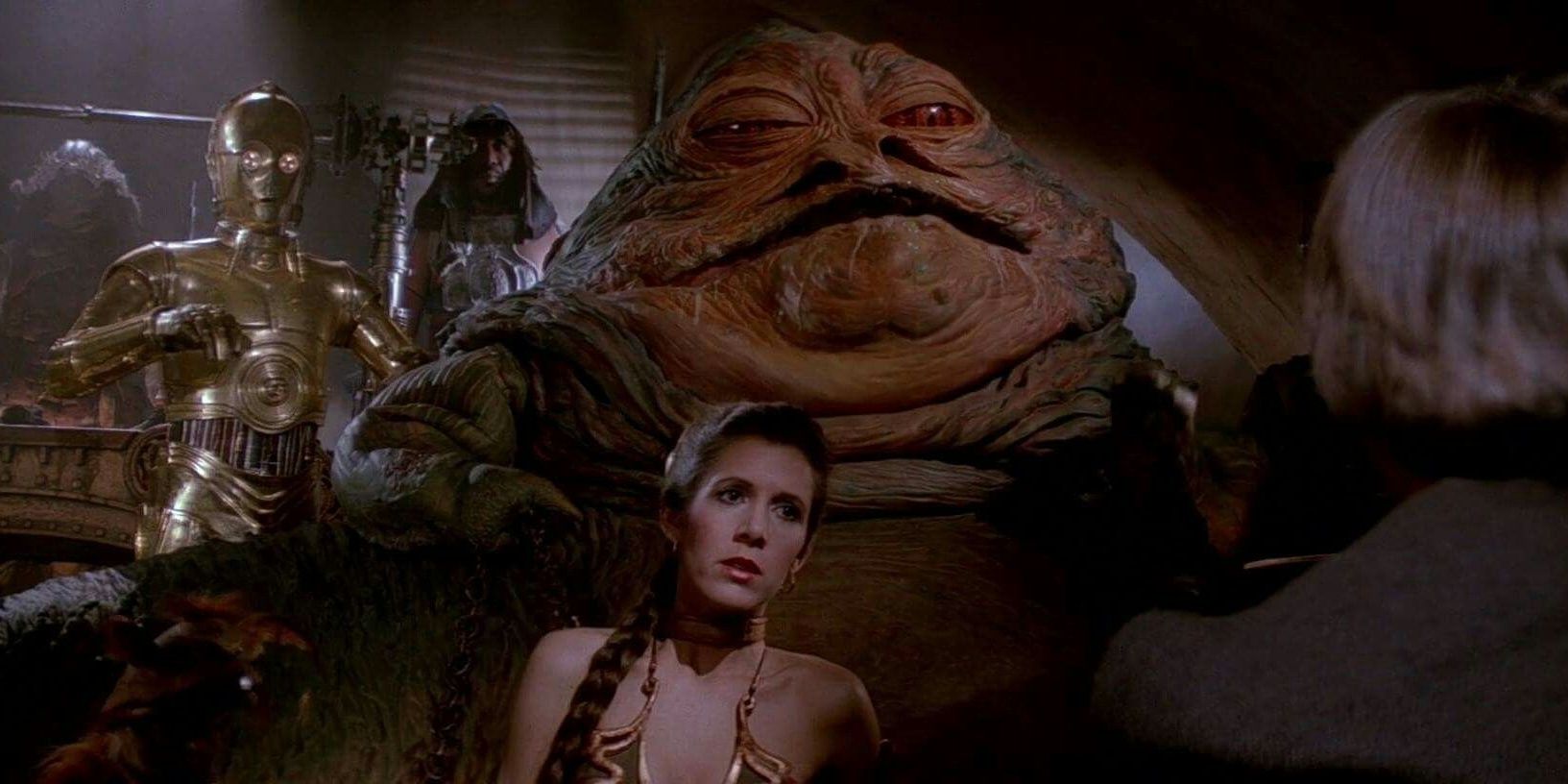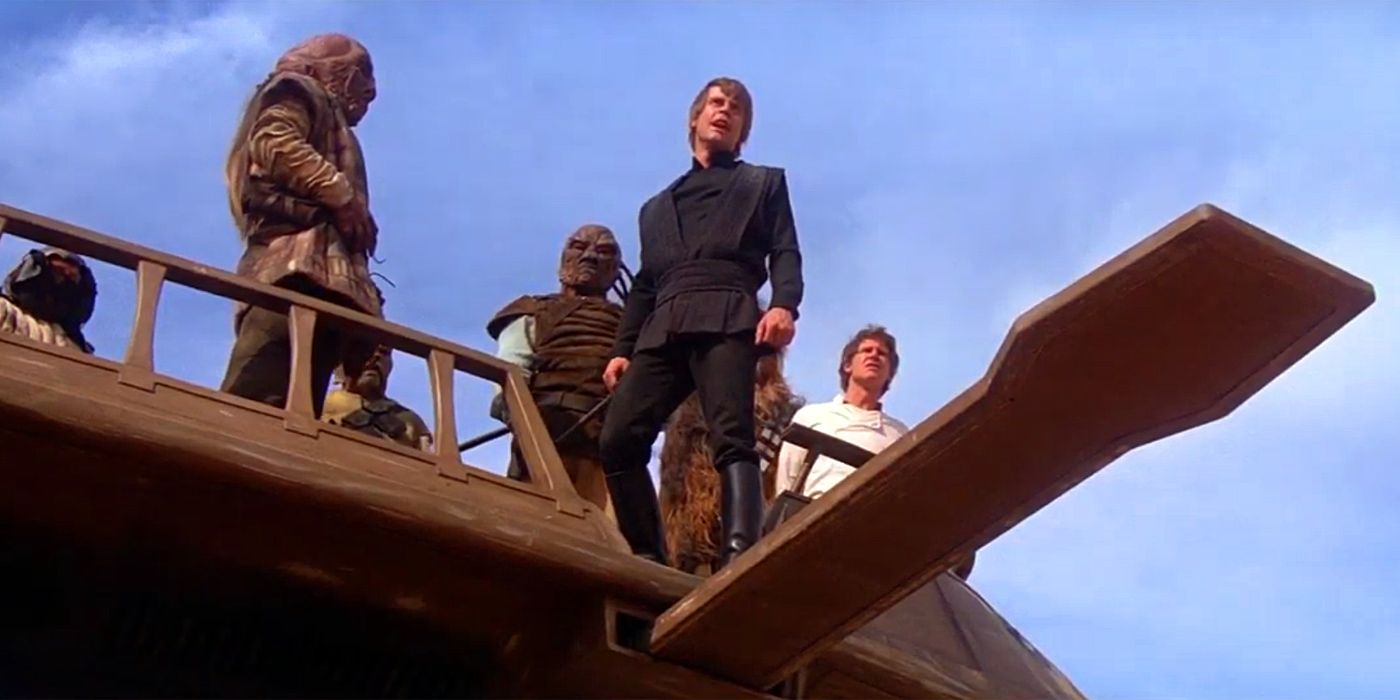As the finale to the original trilogy, Star Wars: Episode VI – Return of the Jedi presented Luke with a stark moral choice: follow his father down the path to the Dark Side, or stay in the Light even if it cost his life. Luke was desperate to avoid fighting Darth Vader in the throne room in part because he understood the temptation he faces. His inner conflict with his own worst instincts came spilling out much earlier in the movie when he and his friends rescued Han Solo from Jabba. Luke came far closer to embracing the Dark Side in that fight than may initially be apparent.
Technically, Sith powers hadn’t been formally defined when Return of the Jedi was first released, at least as to how they were distinguished from the Jedi's. Luke’s behavior could be justified at the time as simply Force powers. Yet there are cues both subtle and overt that he tapped into his negative emotions in order to defeat Jabba, and that the Emperor’s plan to corrupt him as Vader’s replacement came perilously close to success.
Jabba richly deserves what he gets, which obscures Luke’s dark proclivities beneath a legitimate sense of justice. When Luke arrives at his palace, the Hutt is literally using Han as a wall decoration and has Leia chained to his throne in her infamous slave bikini, so the Jedi has reasons for his anger. And yet anger it remains. James Kahn’s novelization of the movie describes Luka’s satisfaction at being able to rid the galaxy of a “parasite” like Jabba. It also states how he quietly hoped the gangster would provoke a confrontation rather than accepting a pay-off in exchange for Luke’s friends. He uses Jabba’s odiousness as a justification to kill.
Even without that apocryphal insight, the movie makes Luke’s anger clear. It starts with his costume: black like the Sith, continuing the symbolic shading from his white costume in Star Wars: Episode IV – A New Hope and his darker tan one in Star Wars: Episode V – The Empire Strikes Back. That darkness is borne out as he arrives at Jabba’s Palace by Force choking the Gamorrean guards in his way, without discussion or alternative.
His subsequent conversation with Jabba is equally harsh. He presents stark terms to the crime lord -- make a deal or be destroyed -- and the moment Jabba balks, he produces a blaster from a nearby guard and aims it at him. The blaster goes off as he and the Gamorrean fall into the Rancor’s lair, suggesting that Luke had every intention of killing Jabba then and there.
But the strongest indication of Luke’s Dark Side proclivities in this sequence comes from Mark Hamill’s performance. “It’s the last mistake you’ll ever make,” he assures Jabba with a sinister smile on his face, setting up the battle at the Sarlaac’s pit. He cuts down Jabba’s entourage in short order, mirroring the way Jedi cut down Separatist droids in copious amounts during the Clone Wars. Droids, however, are not living things, and as reprehensible as the crime lord’s minions are, there’s a stark difference between killing them and destroying robots. Luke simply has no problem with it.
George Lucas loosely paralleled Luke’s conflict with Anakin’s downfall in Star Wars: Episode III – Revenge of the Sith, and subsequent details about the Sith Lords painted Luke’s behavior in a retroactively similar light. That shades his confrontation with Jabba in ways that weren’t readily apparent when the film first came out, highlighting how close Luke came to his father’s fate and making his ultimate choice to reject the Dark Side all the more powerful.



